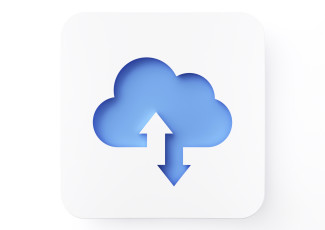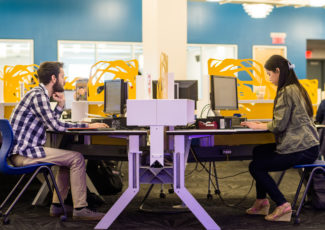Community College CIO Talks Tech
By Sarah Asp Olson
June 6, 2016
How Hostos Community College uses technology to keep students connected and on track.
In years past, Hostos Community College, part of the City University of New York (CUNY) system, has made it onto the Center for Digital Education’s (CDE) Top 10 Tech-Savvy Community Colleges list for 2015-16.
But this is the first time the college has placed first among the midsized colleges (5,000-10,000) in CDE’s annual Digital Community College Survey. “We’re pretty excited about that,” says Varun Sehgal, chief information officer and assistant vice president of IT at Hostos.
Hostos is using technology to ensure that students stay connected, engaged and on track. The college’s mobile app myHostos, along with its continued commitment to tech-enhanced learning, earned Hostos first place.
In this Q&A with the 21st-Century Center, Sehgal shares how Hostos uses technology to enhance the student experience, which then contributes to overall student success.
What is the college’s philosophy when it comes to using technology?
Part of our vision is that our students who come here should have access to the latest and greatest technology in a secure environment, whenever and however they need it. We want our students to be able to move on to their baccalaureate programs or into professions and be fully exposed to and prepared with the technology skills they need to succeed. Just as important, we need to ensure we implement and support academic and administrative technology solutions that allow our faculty and staff to provide the best instruction and service.
How have you used technology to enhance the student experience?
Most recently, we realized there is this growing trend of students wanting to have access [to the college] via their mobile devices. Sometimes the [CUNY] systems were clunky, or web pages wouldn’t be as mobile-friendly as they should be, so we made a very concerted effort last year in developing a mobile app that took into consideration not only the systems that the campus delivers but even systems that are used and hosted by the central university. That, I think, is a real game changer because it really allows our students to be productive regardless of where they are.
How has technology contributed to student success, retention and completion?
I’m going to be cautious because there’s no single solution or silver bullet to student completion, and technology is no exception. It would be very disingenuous to say technology is somehow responsible for improving completion rates, but we like to think it helps ensure our students have timely access to the resources they need and also be able to have greater control over their success in conjunction with faculty and staff on campus.
What advice can you offer other colleges looking to implement smart and meaningful technology?
Be collaborative. Make sure you involve the students, the faculty, the staff in a lot of the initiatives you’re considering, because they have firsthand, real insight that will be of tremendous value as you’re looking to implement and deploy new solutions. Gain continuous feedback; don’t set it and forget it. It’s also extremely important to have a very stable and secure infrastructure. If your foundation isn’t stable, nothing else will work.
Most important, make sure you focus on the big picture. At the end of the day, ask yourself about whatever you are doing: Is it going to somehow drive student success? If the answer is yes, you’re on to something. If you can’t justify it in terms of student success, then I would say you may need to consider why it is you’re doing it.







